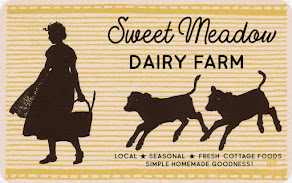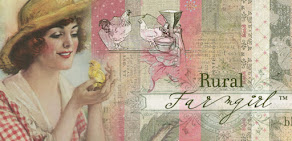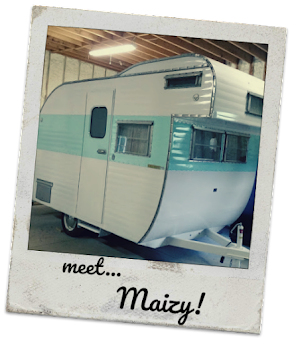Just like everything else on the farm, it's time to prepare for winter. So we're putting the garden to bed, stacking straw bales around the coop, and creating cozy corners for barn cats. It's also time for the beehive to be readied for winter, and this is a new experience for us.
Our bees arrived in July, and so far they've worked hard drawing out foundation and prepping themselves for the season to come. The bee inspector was out last Saturday, and he says we have plenty of honey stores for them to overwinter and that everything in the hive looks just right...yay, that's good news!
So what are we doing to prepare them for winter? Well, here's what we've done so far. Now by no means are we experts, this is, after all, our first beehive. But with endless reading and talking with other beekeepers, we've completed the following...
So what are we doing to prepare them for winter? Well, here's what we've done so far. Now by no means are we experts, this is, after all, our first beehive. But with endless reading and talking with other beekeepers, we've completed the following...
1~
Keep inspecting the hive to make sure the queen is there or that eggs are easily seen. (our queen is marked, and was easy for us to spot...all is well!)
2~
Continuously check honey supplies for winter (this food storage will keep them alive through the cold months). We have an 8-frame, medium hive, so our hive body consists of 3 boxes. An inspection told us that all frames are filled, but also lifting the hive from behind is a clue to how much food storage the bees have. Having lifted several 50-pound chicken feed sacks, the weight was familiar to me, and the hive was difficult to budge. Again, a good sign that it weighs the 60 to 100 pounds that it should.
3~
Feed the colony a 2:1 sugar-syrup mixture. Following the Beekeeping for Dummies instructions, we boiled 2-1/2 quarts of water, turned off the heat and added 10 pounds of white sugar to the mixture. Stirring until dissolved, I then added 2 tablespoons of Honey B Healthy to the mixture. Last month,
I also added Fumagilin-B to protect them against Nosema. (1 teaspoon in 1/2 c. cold water stir to dissolve, then added to the sugar mixture...this is only added to the first 2 gallons of syrup mixture.)
I also added Fumagilin-B to protect them against Nosema. (1 teaspoon in 1/2 c. cold water stir to dissolve, then added to the sugar mixture...this is only added to the first 2 gallons of syrup mixture.)
4~
Monitor the syrup mixture...we'll keep feeding them until they stop taking the syrup or until the daytime temperatures drop into a consistent high only in the 40's.
5~
5~
I've glued craft sticks/Popsicle sticks to the 4 corners of the inner cover's flat side. This will give the bees ventilation during the winter...it's important to keep the condensation from dripping back on them as ice-cold water.
6~
6~
A metal mouseguard was put in place to allow the bees easy in & out access, but to keep mice
(who are looking for a cozy winter home) outside...where they belong!
~~~~~~~~~~~~~~~~~~~~~~~~~~~~~~~~~~~~~~~~~~~~~~~~~~~~~~~~~~
(who are looking for a cozy winter home) outside...where they belong!
~~~~~~~~~~~~~~~~~~~~~~~~~~~~~~~~~~~~~~~~~~~~~~~~~~~~~~~~~~
So that's our routine for fall. As November approaches, we plan to wrap the hive in black tar paper to help it absorb heat (leaving the entrance open). We'll also stack straw bales or provide another sort of windbreak from the harsh winds, and finally place bricks on the hive cover to keep it in place during those strong winds.
We plan to make a ventilation box to place on top of the hive...an empty super with a screened bottom and several screened ventilation holes drilled in the sides. The box is then filled with sawdust or insulation. More reading up on this is needed, as is the suggestion that we keep the feeder on during the winter. I was told the heat from the hive will keep the syrup mixture from freezing, but my worry is that in opening the hive to refill the feeder, I'll chill the bees.
And so it means there is more reading to do, and much to learn. We've found that there are many opinions from various beekeepers, and many options when it comes to what's "right" in his hobby! And with that said, I do welcome any beekeeper comments...it's always good to learn what's worked and not worked for you. Your input is appreciated!
































What busy bee's you all are hehe ! That's wonderful I am so glad the bee keeping worked out for you this year . Here's hoping the winter months do well for you as well ! Interesting post thanks for sharing with us . Have a great day !
ReplyDeleteAs always, thanks for your kind words and for stopping by, Country Gal...it's most appreciated! We're crossing our fingers...the weather's turning chilly, so we'll see how they fair come spring. The next beekeepers' meeting is Monday night...time for me to ask more questions!
ReplyDeleteI am not sure where you live but in climates where it gets freezing in the winter it not a good idea to leave syrup on the hive. They won't take the syrup anyway if it is too cold. It also has the possibility to drip on the cluster when there are wide swings in temperature and wet cold bees are dead bees. You can use fondant, dry sugar or a candy board instead if they need food. This would be a great post to share with my readers on my beekeeping blog hop. Check it out! http://www.beverlybees.com/beeline-buzz-hop-1
ReplyDeleteThanks so much for your ideas Anita! I've decided not to keep the feeder on all winter. It sounds like the dry sugar or fondant would be quick & easy to add without keeping the hive open too long. I look forward to reading your blog to learn more...thanks again!
Delete